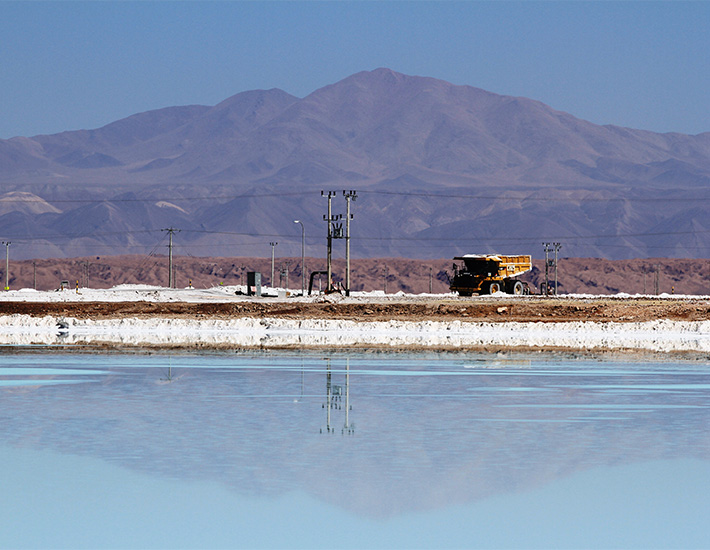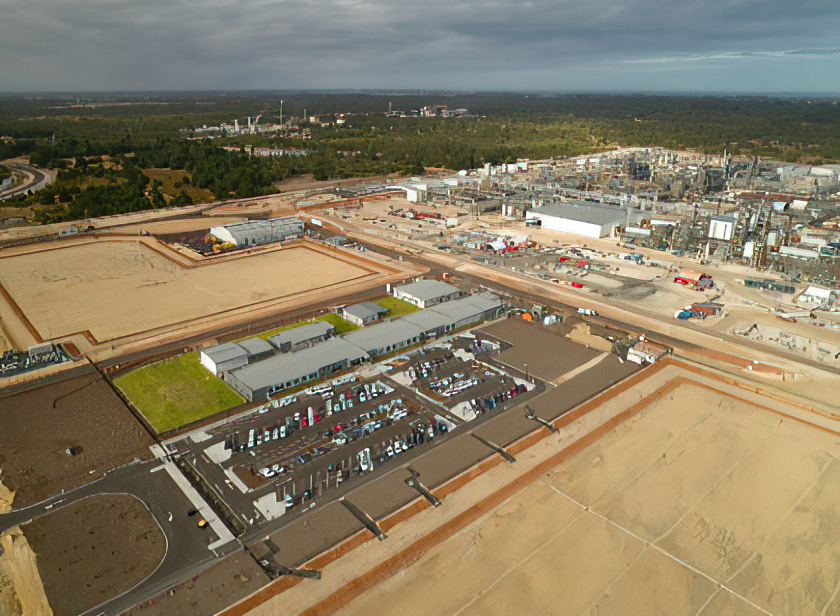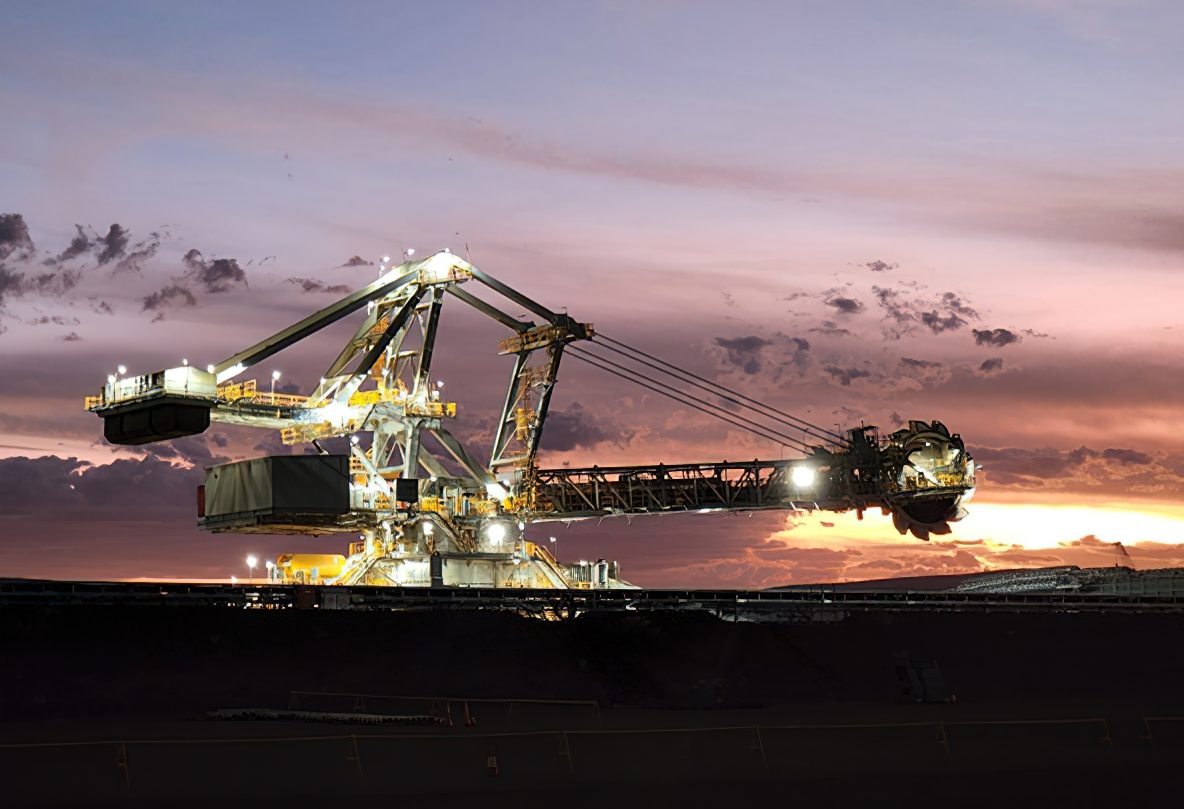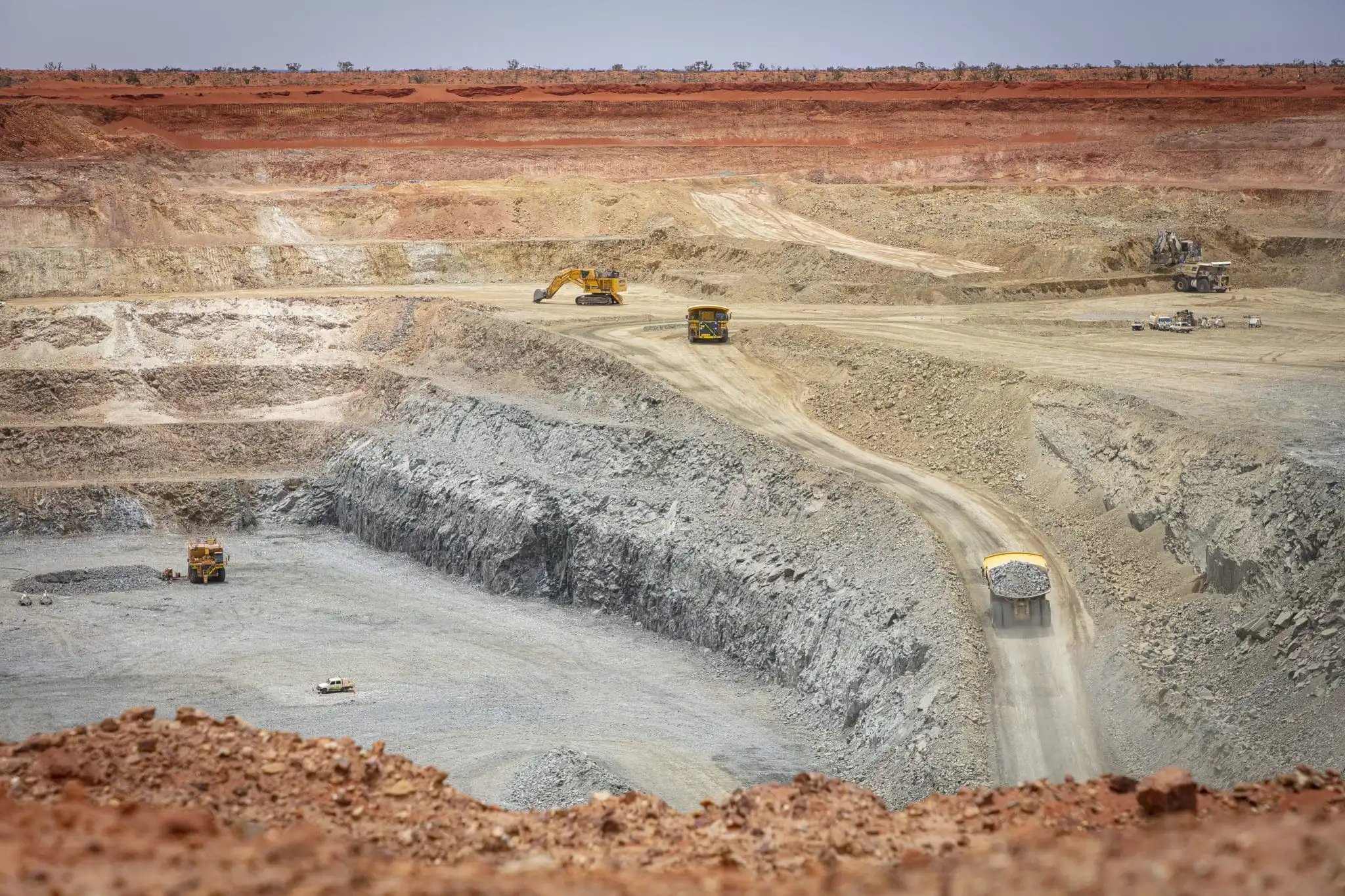Western Australia – A Haven for the Commodity Investor

By Luke Holland
Western Australia (WA) is synonymous with mining, few places in the world are as well endowed with such a wide array of valuable commodities. Stretching from the iron rich hills of the Pilbara to the world-renowned gold laden super pit of Kalgoorlie, WA has a long history of exploration and mining. The resource sector delivered record sales of $231 billion dollars (AUD) in 2021-22, with iron ore remaining the main breadwinner for the state, accounting for $137 billion dollars (AUD).
The mining state has enjoyed strong political support in the past, with the current Premier Mark McGowan set to continue this trend. Of particular interest to the State Government is its large lithium reserves. On April 4th, 2023, a 40-million-dollar commitment was made in conjunction with the government’s net zero target. This is the latest iteration of the Future Battery Industry Strategy announced last year to place WA at the forefront of Electric Vehicle (EV) technology, ensuring the ongoing success of the domestic mining industry into the future.
In 2021 Western Australia accounted for 24% of the world’s lithium reserve and 52% of global supply within the same year, netting 1.08 billion Australian dollars in lithium exports. Forecasts show Australia will continue to build on this, increasing lithium exports to 3.8 billion AUD within the fiscal year 2023. This dramatic revenue rise is in no small part due to the ongoing stellar lithium prices. Currently ranked as the State’s 3rd highest valued mineral, lithium sales returned $6.8 billion in revenues for the state in 2022, which is more than a 2.5 multiplication of the previous annual record. This surge in demand is spurred on by the increased need for decarbonization of the global motor vehicle fleet, with battery power deemed the most attractive alternative. However, caution is ushered in by leading financial institution Goldman Sachs, forecasting the softening of lithium prices, dropping from $53,000/ton to $34,000/ton citing temporary oversaturation coupled with a slow EV take up as contributing factors.
Taking a step back from the political sphere, individual commodities have been reacting differently to the global economic trends of late, understanding these patterns is key to unearthing success in the investors market.
Lithium, the crown jewel in the battery metal crown, has seen significant pullback in prices of late, with some analysts like Benchmark Minerals seeing a 20% drop in the spot price since January of this year. The decrease in price could pose a deterrent for potential investors in the WA market, however it too presents an opportunity, some are only too willing to take on.
 In early May it was announced that Chile based lithium juggernaut, SQM [SQM-NYSE] would double down on its investment in WA’s Mt Holland project. This increased investment comes as the Chilean government plans to nationalize the production of the key battery componant, encouraging the mining conglomerate to look elsewhere for investment. The multi-billion-dollar deal will be done alongside Wesfarmers [WES-ASX], a Perth-based giant, with a sustainability arm in the lithium sector. A statement from Wesfarmers CEO, Rob Scott explained how the current lithium price was of little concern as Wesfarmers weighed up the long-term goals of the project and potentially adding to the 2 billion dollars already invested.
In early May it was announced that Chile based lithium juggernaut, SQM [SQM-NYSE] would double down on its investment in WA’s Mt Holland project. This increased investment comes as the Chilean government plans to nationalize the production of the key battery componant, encouraging the mining conglomerate to look elsewhere for investment. The multi-billion-dollar deal will be done alongside Wesfarmers [WES-ASX], a Perth-based giant, with a sustainability arm in the lithium sector. A statement from Wesfarmers CEO, Rob Scott explained how the current lithium price was of little concern as Wesfarmers weighed up the long-term goals of the project and potentially adding to the 2 billion dollars already invested.
SQM chief, Ricardo Ramos has outlined plans to expand infrastructure to cope with increased production, “we strongly believe that we will reach an agreement [with Wesfarmers] – and we will review all the data from the engineering and the geological studies that we’re performing today – that will allow us to go forward to 100,000 tons”. This agreement boasts huge encouragement for WA’s lithium sector and lends confidence for those seeking further investment in this space.
Elsewhere in WA, Liontown Resources [LTR-ASX] have shrugged off potential doubt in the lithium market as they rejected a mammoth 5.5 billion-dollar takeover bid from US giant, Albemarle [ALB-NYSE]. Liontown lay claim to the Kathleen Valley project boasting some twenty spodumene-bearing pegmatite dykes. Liontown’s confidence stems from a projected 2.5-billion-dollar cash flow in 2025, resulting from the Kathleen Valley mine’s first year production. A stellar return even with the current deflated lithium price. Furthermore, Liontown has looked at potentially building a lithium hydroxide plant in a move downstream. The company’s chairman, Tim Goyder has joined Mineral Resources’ Chris Ellison in calling for tax breaks and large grants from the Australian, Albanese led government to further advance WA’s claim on the global lithium stage.
 Although Ablemarle failed in its acquisition of Liontown Resources, it is full steam ahead at its Kemerton based lithium hydroxide processing plant in WA’s south-west. A 4-billion-dollar investment will double the size of the plant. This significant investment coupled with the company’s attempt to court Liontown Resources showcases WA’s attractiveness to the international lithium investor market.
Although Ablemarle failed in its acquisition of Liontown Resources, it is full steam ahead at its Kemerton based lithium hydroxide processing plant in WA’s south-west. A 4-billion-dollar investment will double the size of the plant. This significant investment coupled with the company’s attempt to court Liontown Resources showcases WA’s attractiveness to the international lithium investor market.
Albemarle chief executive Kent Masters comments “Australia is essential to the global supply chain for energy storage and an important part of our diverse portfolio”. “Our decision to expand was driven by our confidence in future demand and allows us to offer customers additional supply from Greenbushes, well known as one of the world’s best lithium mines.”.
This optimistic outlook is not confined to lithium, other commodities such as iron ore and gold also share such enthusiasm for what lies ahead, although some are more tempered than others.
Iron ore, WA’s most profitable commodity, saw prices during the Covid-19 pandemic reach unprecedented levels fetching 230 (USD/T) in May 2021. Since then, there has been a steady decline with a high of 150 (USD/T) in 2022. In February, Goldman Sachs predicted the iron ore price to once again hit 120 (USD/T) this year, with a three-month target of 150 (USD/T) as the Chinese seasonal boost coincides with a near term market squeeze. However, this has yet to materialize. In fact, the contrary has occurred, the bulk commodity slumped to its lowest level since December 2022 in April this year. Liberium Capital is skeptical of a bullish iron ore market for the remainder of this year. The investment bank cited weak industry demand, coupled with finalized 2023 inventory restocking and a cap on Chinese steel production as reasons for its bearish outlook. Elsewhere, Fitch Solutions fails to share the same bearish sentiment as Liberium, stating that it expects China’s economy to grow 5 % this year, increasing 1.7% on 2022. Furthermore, Fitch Solutions believes a weaker US dollar this year will act as a buffer for metal prices.
Although Fitch expects demand to exceed expectations, the emergence of the China Mineral Resources Group (CMRG) may hinder a significant price surge. The CMRG has been established to monitor mineral imports such as iron ore and place limitations on price hikes, thus controlling demand. Considering these factors Fitch forecasts a price of $US120/ton for 2023 which sits between Goldman Sachs $US150/ton and Liberium $US101/ ton. This reflects the tumultuous iron ore market, so heavily reliant on China’s industrial growth.
 Although economists are struggling to get a handle on how the iron ore market might perform in the near term, the reality is that Rio Tinto Iron Ore [RIO-ASX] has made its strongest ever start to a year, with a 16 percent increase in volumes exported. The mining colossus shipped 82.4 million tons in Q1 this year, trumping the 2018 record. This signifies a change in fortunes for Rio who performed below expectations between 2019 and 2022 with lower tonnages and poorer quality ore departing from its ports. The tipping point came in the form of the Gudai-Darri mine, a 3.2 billion-dollar (AUD) investment which began production of higher-grade ore in mid-2022.
Although economists are struggling to get a handle on how the iron ore market might perform in the near term, the reality is that Rio Tinto Iron Ore [RIO-ASX] has made its strongest ever start to a year, with a 16 percent increase in volumes exported. The mining colossus shipped 82.4 million tons in Q1 this year, trumping the 2018 record. This signifies a change in fortunes for Rio who performed below expectations between 2019 and 2022 with lower tonnages and poorer quality ore departing from its ports. The tipping point came in the form of the Gudai-Darri mine, a 3.2 billion-dollar (AUD) investment which began production of higher-grade ore in mid-2022.
Fortescue Metals Group [FMG-ASX], another iron ore giant, has finally begun production at the long-awaited Iron Bridge magnetite mine. The opening of the $US3.9 billion ($5.89 billion AUD) mine and processing facility was delayed by 12 months incurring $US1.3 billion in unforeseen costs. Nevertheless, FMG is confident that Iron Bridge’s magnetite will attract a premium price and help lower carbon emissions in China. Newly appointed metals chief executive, Fiona Hick, stated that the company is already scouting for the next magnetite project. “The ore bodies are there to support quite a few more Iron Bridge’s so we’ll be looking through the very objective lens of return on investment and pay back, and that’s where the capital will go”. This sentiment further bolsters FMG’s commitment to the lucrative bulk commodity. Iron Bridge is crucial to FMG’s strategy of increasing iron grade within its inventory. This will allow for better profit margins during trying times as the Chinese market fluctuates. Although there is uncertainty around the iron ore market as instability continues, the production and investment in WA’s iron ore deposits is unrelenting.
Gold also witnessed a 20-year high in domestic volumes produced, supported by strong Australian dollar prices from a weaker currency. Given the recent crisis associated with Credit Suisse, Goldman Sachs has labeled gold as a “haven for investors”. At the end of March there was a 2% increase which culminated in a record price for gold, rising above $3,000 AUD. This positive trend is predicted to continue this year as supply constraints become apparent. As inflation continues to rise and more uncertainty is thrust into the market, gold remains the most reliable investment. First Eagle Investments’s Matthew McLennan suggests that buying gold would hedge against volatile equity markets for the next decade or so. McLennan suspects that the recent inflation has been spurred on by a loss of fiscal discipline and corporate pricing power, which are still on-going. Historically, when inflation runs rampant gold has outperformed, a trend which is believed to continue. Currently Australia’s largest gold producing state, accounting for 68% of total Australian gold output in 2021, WA is again well placed to take full advantage of the opportunity presented by a turbulent global economy.
 Arguably leading the gold rush, two of WA’s prolific domestic gold miners have reached the acclaimed one-million-ounce production. Gold Road Resources [GOR-ASX] and Goldfields [GFI-JSE] in April announced that their JV project the Gruyere mine has achieved this mammoth accolade, less than three years into production. Current forecasts see the JV producing 355,000 – 375,000 ounces per annum.
Arguably leading the gold rush, two of WA’s prolific domestic gold miners have reached the acclaimed one-million-ounce production. Gold Road Resources [GOR-ASX] and Goldfields [GFI-JSE] in April announced that their JV project the Gruyere mine has achieved this mammoth accolade, less than three years into production. Current forecasts see the JV producing 355,000 – 375,000 ounces per annum.
Also making noise of late in this space is Saturn Metals [STN-ASX]. Having recently intersected high grade gold at its Apollo Hill Project in WA, the team are keen to further emanate this success. Saturn announced themselves on investors radars with a 55-meter intercept grading 2.1g/t gold. MD Ian Bamborough, encouraged by the results stated “results like these indicate the potential for a “significant amount of gold in a relatively small portion of the deposit”. Located northeast of Kalgoorlie in the multi-million-ounce district, blue sky investor opportunity remains a prospect.
As the gold price remains steadfast, Western Australia’s vast gold reserves appear more attractive than ever to both junior explorers and large multinationals alike. Presently, for investors there are fewer places in the world with so many answers to so many questions, than Western Australia. Truly a mecca for mining.
